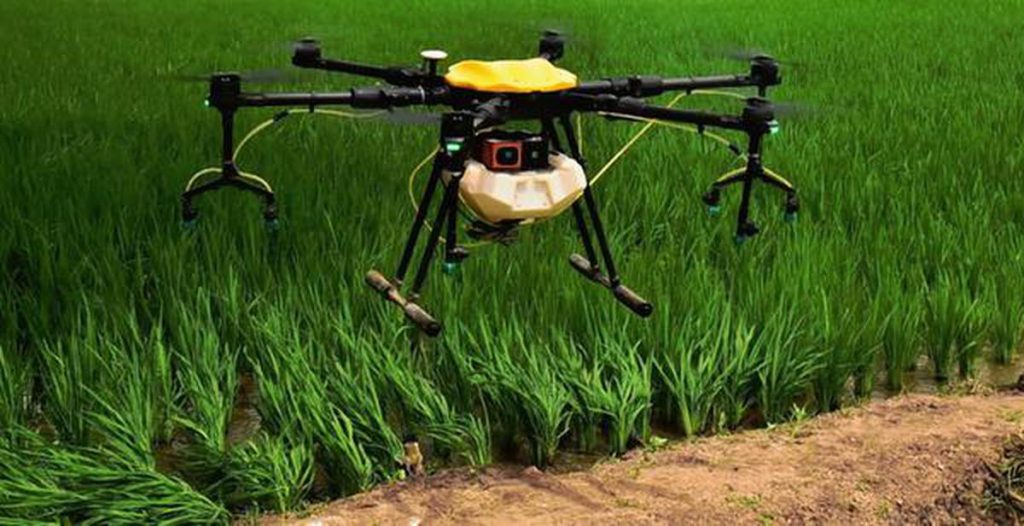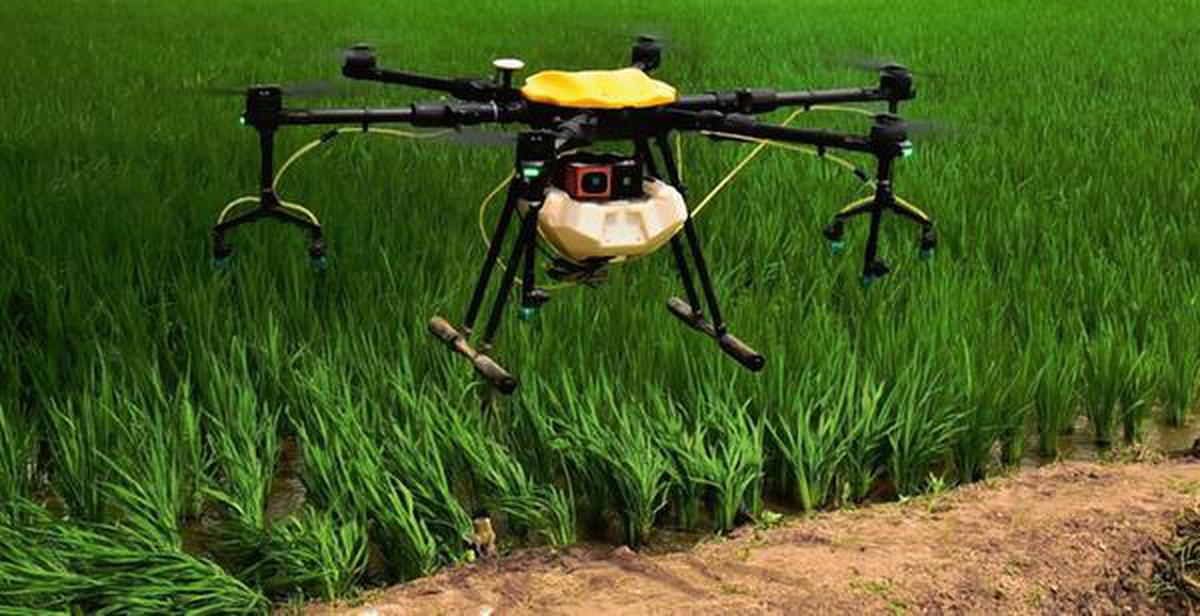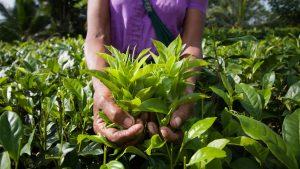Synopsis
While emerging fourth industrial revolution technologies can play a role in addressing these challenges. WEF cited a Ministry of Electronics and Information Technology (MeitY) report that highlighted that digital tech-based agriculture can unlock further value of $65 billion by 2025. The gross domestic product (GDP) impact of digital agriculture will be even larger.
Drones, or the unnamed aerial vehicles, are increasingly being used by various sectors ranging from personal use to war purposes, but they can also add to economic output of a country.
Drones have the potential to be at the center of a technology-led transformation of Indian agriculture and boost the country’s gross domestic product by 1-1.5 percent while adding at least five lakh jobs in the coming years, the World Economic Forum said in a report.
“There are truly revolutionary changes happening in the farthest reaches of the country – at the intersection of artificial intelligence (AI) and agriculture as well as between military and civilian technologies – that have the power to truly transform a billion livelihoods,” said the report, prepared by WEF’s Centre for Fourth Industrial Revolution in India in collaboration with Adani Group. “Drones are at the centre of such a revolution and can become the fulcrum for a technology-led transformation for the economy.

Importance of the farm sector
India’s agriculture sector is vital for the economy as it provides livelihood for 8% of families and ensure food security to 1.3 billion of people residing in the world’s second most populous state. In fact, Indian agriculture is not just significant for the domestic market market but it is a key component of the global food supply chain as well.
India exported agriculture and allied products valuing $29,815 million in 2020-21, WEF said. In comparison with the industry/services sector, which adds a gross value of 80% while employing 54.4% of the country’s workforce, agriculture accounts for 45.6% of the workforce at 18.29% of the gross value added (GVA) as of 2019-2020, it added.
Challenges for the agriculture sector
However, the sector has reached a critical juncture where the challenge of food security is compounded by nutritional security, self-sufficiency, ecological problems, climate change and sharp inflation.
Among other challenges, the farm sector faces challenges including fragmented landholdings, inefficient usage of agriculture inputs, poor availability of credit and financial inclusion, lack of market access and poor post-harvest infrastructure.
A mix of infrastructural and access challenges have stopped Indian agriculture from achieving its full potential, the report said.
Drones to the rescue
Like a messiah, the drones have the potential to transform the agriculture sector and reduce disparity in the employment-to-output ratio of agricultural and non-agricultural sectors.
“Drones are poised to be an effective tool to support farmers reduce their operating costs and efforts, while at the same time optimizing their input use. There are multiple uses for drones, including surveying, seeding, spraying, pollination, etc. that are at different stages of technology and business model maturity,” said WEF.
Drones can also be an effective enabler for mainstreaming different emerging technologies such as advisories, yield estimation or insurance, it added.
While emerging fourth industrial revolution technologies can play a role in addressing these challenges. WEF cited a Ministry of Electronics and Information Technology (MeitY) report that highlighted that digital tech-based agriculture can unlock further value of $65 billion by 2025. The gross domestic product (GDP) impact of digital agriculture will be even larger.
Precision agriculture know-how and farm advisory services shared through multiple channels based on multiple existing and new data sources can enable an economic opportunity of $25 billion through a 15% increase in productivity.
There is also an estimated potential for 40-60% of the agricultural surplus to be transacted through digital marketplaces by 2025 and a 10% improvement in farmers’ price realization by selling produce through electronic channels, creating an opportunity of $25 billion, WEF said.
More power to the drones
For the drone industry to thrive though as a viable mechanization option, enabling infrastructure needs must be strengthened above and beyond the recent policies of the Indian government.
New Delhi has significantly eased drone policies with mechanisms such as the Production Linked Incentive scheme and import bans paving the way for the domestic manufacturing sector.
Drone and drone components industry will attract $50 billion of investment in the next few years, which will help unlock the potential of the drone sector and make them as ubiquitous for Indian agriculture.
Nonetheless, drone owners and operators would require access to commercial finance as capital to purchase the drones and secondly as working capital finance to fund operations considering the “machines-as-a-service” model is generally based on credit and staggered payments by farmers, WEF said.
“Concentrated efforts are needed from regulators, non-banking financial corporations (NBFC), banks and drone manufacturers to develop customized financial products, risk assessment structures and risk mitigation mechanisms to mainstream commercial lending for drones under priority sector lending (PSL) targets.”
India also needs a national level streamlining of production systems and production capacity, and rapid cycle manufacturing.
There are approximately 593,615 inhabited villages in India, all of which have a reasonable level of agricultural activity. For drones to address such a high input level, India needs to ramp up production capacity, WEF added.
Read more at-https://bit.ly/3N4AdEd




